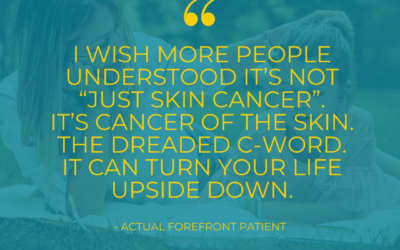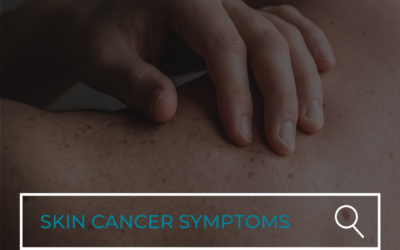
There Are Two Skin Cancer Categories
Skin cancer is defined by two categories: melanoma and non-melanoma. Melanoma is the most dangerous form of skin cancer and is the most likely to grow and spread. While it can develop anywhere on the skin, Melanoma is more likely to start on the chest and back in men and on the legs in women. The neck and face are other common sites.
Non-melanoma cancer accounts for around 96% of all new cases of skin cancer each year. Several sub-categories of skin cancers fall under the general term non-melanoma, but the most common are basal cell carcinoma and squamous cell carcinoma. These cancers are often found in areas exposed to the sun, such as the head, neck, and arms. While very common, they are also usually very treatable.
It’s More Common than You Think
Each year, there are more new cases of skin cancer than combined cases of breast, prostate, lung, and colon cancer. Research has estimated that one in five Americans will develop skin cancer in their lifetime. According to the American Cancer Society, about 3.3 million basal and squamous cell skin cancers are diagnosed in America each year, with an estimated 97,610 new melanomas diagnosed in 2024.
Skin Cancer Does Not Discriminate
Skin cancer knows no boundaries. While your chances of getting melanoma increase as you get older, it’s one of the most common cancers in young adults ages 25 to 29. There are certain factors that can increase your risk, but even if none of these apply to you, it doesn’t mean you are safe.
- People with moles or abnormal moles
- Excessive sun exposure
- History of sunburns
- Family history of skin cancer
- Weakened immune system
- Sunny or high-altitude climates
Early Detection Saves Lives
Especially in the case of melanoma, early diagnosis can be the difference between life and death. According to American Cancer Society research, if melanoma is caught in stage one, the 5-year survival rate is 97%. Late detection survival rates can be as low as 15%. Monthly self-skin checks and yearly skin exams by your local dermatologist can help stop skin cancer in its tracks. If you spot an abnormal mole, don’t overlook it or delay your appointment.
There Are Preventative Steps You Can Take
According to SkinCancer.org, about 90 percent of non-melanoma cancers are associated with exposure to UV radiation from the sun or tanning beds. It is important to properly and regularly apply sunscreen, seek shade while the sun’s UV rays are their strongest, and cover up with protective clothing.
Preventative measures should also start with infancy. Keep infants under the age of six months out of the sun. Infants over the age of six months should be wearing proper sunscreen and kept in the shade. Just five blistering sunburns can increase a child’s risk of developing melanoma by 80 percent.
Be Proactive
Early detection saves lives, and a simple, yearly in-office skin screening with your local board-certified Forefront Dermatologist can make the difference between life and death. Find a location near you to schedule your annual skin screening.





